mini decimal bascule
a scale model
maker: unknown, Germany
design: Aloïs Quintenz Strasbourg, France, patent application in 1821, first patent granted February 9, 1822
admitted by the French verification office on August 28, 1824, applicant Fréderic Rollé business partner and successor, France

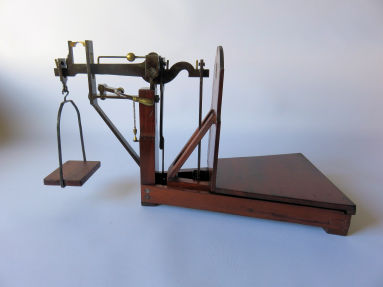
mini decimal bascule
| This is now a well working mini version of a decimal bascule. With 100 grams on the weight board you can weigh ten times, so 1000 grams. 200 grams to weigh 2000 grams, et cetera. I bought this mini model on an auction site in Germany. On arrival by mail the bascule appeared to be broken and incomplete. If you search the internet for what a bascule should look like, you will also quickly come to auction sites, the offer there is large, most bascules by the way too, and the prices are very low. By searching the society journals of collectors of scales and weights I found the name of the inventor of this type of scale. Aloïs Quintenz from Strasbourg in France. He applied for a patent on his design in 1821. The patent became public on 9 February 1822. After three additions, the total patent now includes 48 pages !, the design was approved and admitted by the French verification office on August 28, 1824. The patent was granted to Fréderic Rollé a lender and business partner, and helper of the widow Quintenz, Aloïs Quintenz died on April 17, 1822. Rollé collaborates with Jean-Baptiste Schwilgué.
| 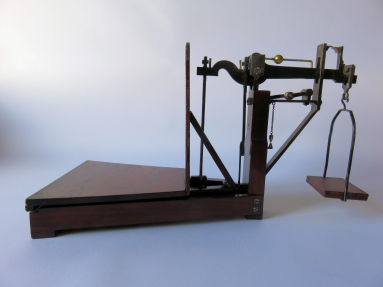
other side of the bascule
|
They further developed the bascule and made it a commercial success. In Le Système Métrique Michel Heitzler wrote a number of articles about Quintenz and Rollé. see, inter alia, 1999/2 pp.1213-121, 2011/2 pp.2489-2490 and 2011/3 pp.2525-2534. In Meten & Wegen no.86, June 1994, pp.2048 a model of 62 cm long and 40 cm high is shown. Meten & Wegen no.88, December 1994 pp.2096 presents a demonstration model of a bascule of 40 cm long and 24 cm high. In Meten & Wegen no.134 juni 2006, pp3184-3187 is an article about a small bascule from Becker & Buddingh, which is 62 cm long and 37 cm high. That specimen was found suitable for weighing up to 50 kilos in 1876.
The specimen shown here is even smaller: 32 cm long and 19 cm high. After the restoration the decimal bascule works great again, see the animation below with the can of Heineken on the bascule and the effect of 1 gram to be added to the weight plate.
This type of scale has many names: bascule, decimaal bascule, brugbascule, Sackwaage, Kartoffelwaage, Decimalwaage, Marktwaage, balance à pommes de terre, balance agricole, balance à grains, balance de ferme, balance décimale, balance de comptoir, platform scales, decimal scales, and so on.
Below some more images of the mini bascule.

the bascule with the brass ball on thread for fine adjustment,
a blocking lever, a number of knife edge bearings and a chain lead
to level the scale
|

the bascule is in balance
|
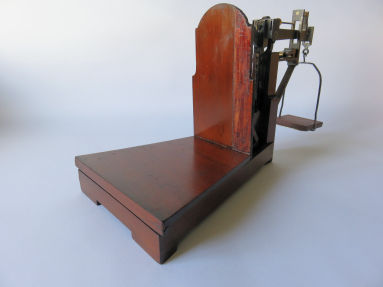
the wooden surface for the goods to be weighed
|
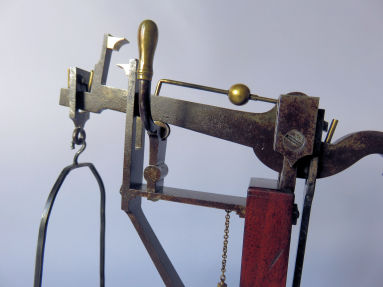
the blocking lever blocks the bascule movement
|

the locking lever in the free position, the bascule can move
|

the bascule is in balance, the brass ball is for fine adjustment
|
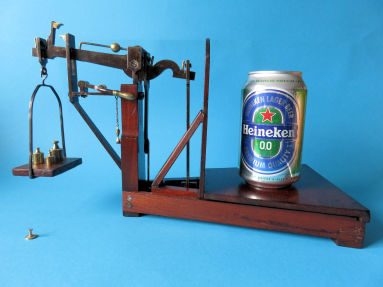
animation: [move pointer over the photo]
adding 1 gram makes the bascule go to the other side
the weighing load is 354 grams, the weights are 35 grams or 35 + 1 = 36 grams
The decimal effect of scale is clearly visible |
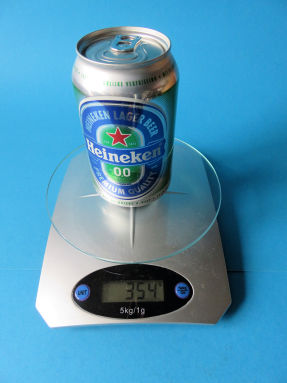
the full can of beer weighs 354 grams
| 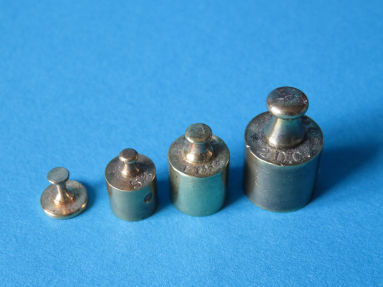
the weights used 1 + 5 + 10 + 20 = 36 grams
|
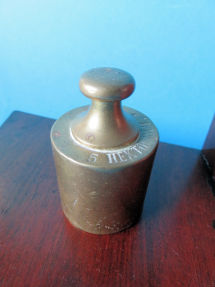
with a load of 500 grams
|

with the 500 gram load, 50 grams is just enough for balance
|
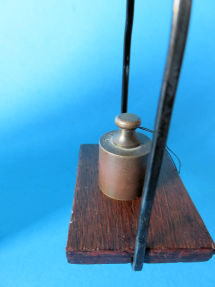
the weight of 50 grams
|

plummet to check level
|
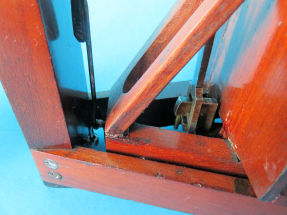
bascule detail
|
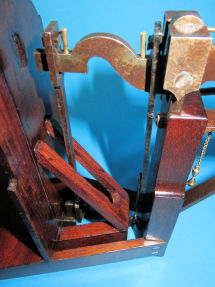
detail of the bascule
|
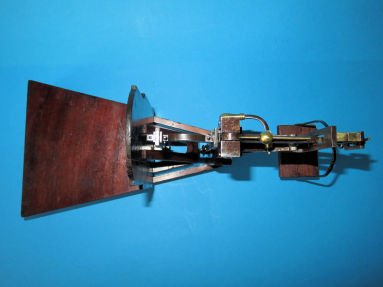
the bascule seen from above
|
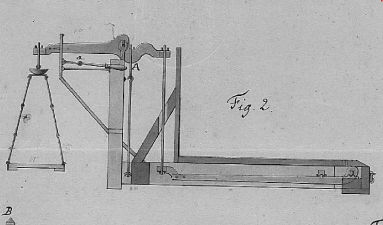
a drawing from the patent application of Aloïs Quintenz from 1821
|
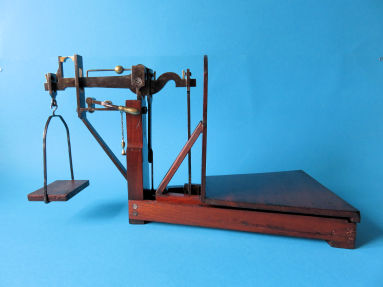
the uncharged bascule is in equilibrium here
|
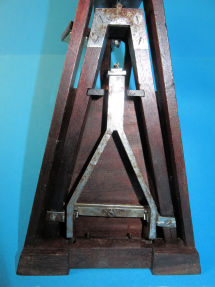
part of the bascule mechanism
|
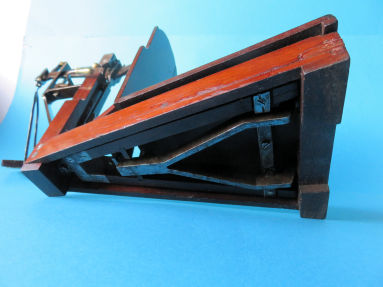
the bottom of the bascule
|
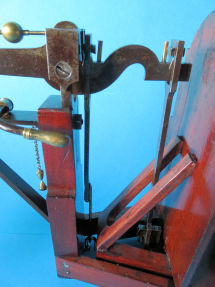
view of the drawbars of the bascule
|
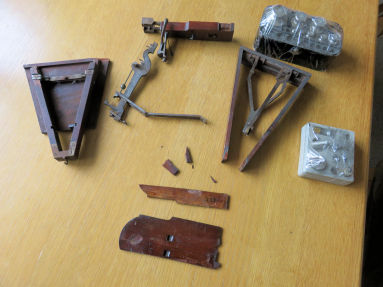
as it came from the mail parcel, next to two weight-blocks(at right)
|

dismantled even further before the restoration
|
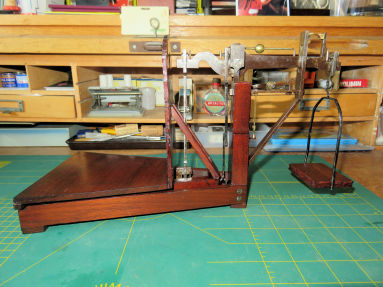
the re-functioning mini-bascule
|


























